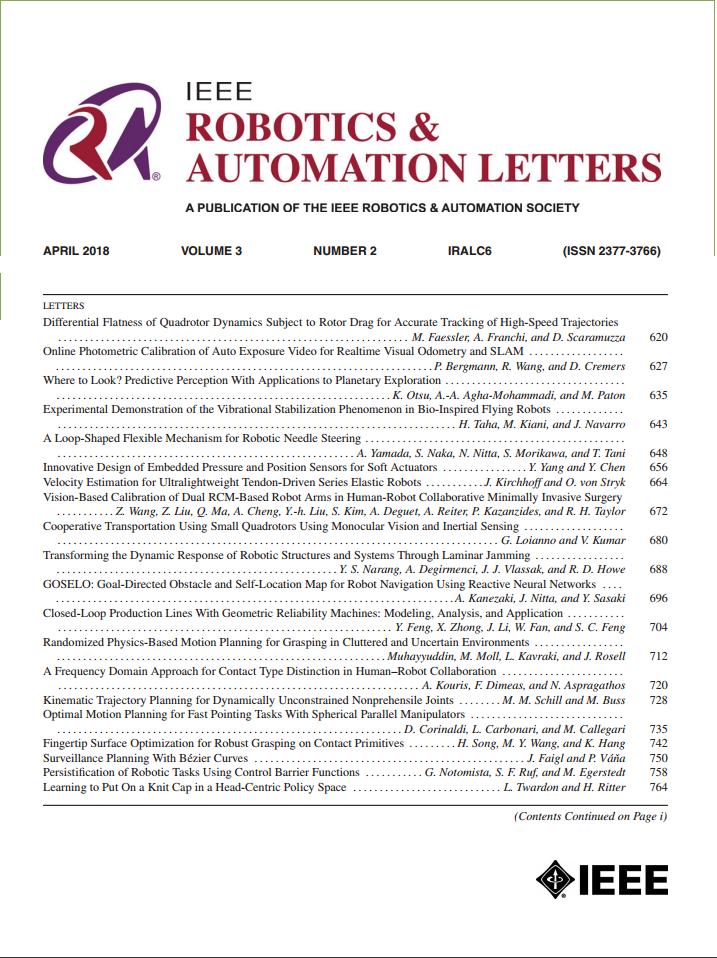MotIF: Motion Instruction Fine-Tuning
IF 4.6
2区 计算机科学
Q2 ROBOTICS
引用次数: 0
Abstract
While success in many robotics tasks can be determined by only observing the final state and how it differs from the initial state – e.g., if an apple is picked up – many tasks require observing the full motion of the robot to correctly determine success. For example, brushing hair requires repeated strokes that correspond to the contours and type of hair. Prior works often use off-the-shelf vision-language models (VLMs) as success detectors; however, when success depends on the full trajectory, VLMs struggle to make correct judgments for two reasons. First, modern VLMs often use single frames, and thus cannot capture changes over a full trajectory. Second, even if we provide state-of-the-art VLMs with an input of multiple frames, they still fail to correctly detect success due to a lack of robot data. Our key idea is to fine-tune VLMs using abstract representations that are able to capture trajectory-level information such as the path the robot takes by overlaying keypoint trajectories on the final image. We propose motion instruction fine-tuning (MotIF), a method that fine-tunes VLMs using the aforementioned abstract representations to semantically ground the robot's behavior in the environment. To benchmark and fine-tune VLMs for robotic motion understanding, we introduce the MotIF-1K dataset containing 653 human and 369 robot demonstrations across 13 task categories with motion descriptions. MotIF assesses the success of robot motion given task and motion instructions. Our model significantly outperforms state-of-the-art API-based single-frame VLMs and video LMs by at least twice in F1 score with high precision and recall, generalizing across unseen motions, tasks, and environments. Finally, we demonstrate practical applications of MotIF in ranking trajectories on how they align with task and motion descriptions.求助全文
约1分钟内获得全文
求助全文
来源期刊

IEEE Robotics and Automation Letters
Computer Science-Computer Science Applications
CiteScore
9.60
自引率
15.40%
发文量
1428
期刊介绍:
The scope of this journal is to publish peer-reviewed articles that provide a timely and concise account of innovative research ideas and application results, reporting significant theoretical findings and application case studies in areas of robotics and automation.
 求助内容:
求助内容: 应助结果提醒方式:
应助结果提醒方式:


